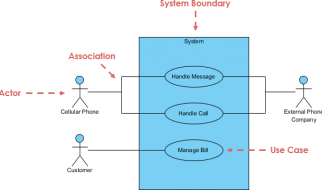STP Marketing


STP is an acronym for several things. STP is a brand of automotive lubricants. The name began as an abbreviation of Scientifically Treated Petroleum. STP is also one of the great Seattle grunge bands of the ?90s. Its an abbreviation of Stone Temple Pilots. RIP Scott.
Marketing and sales are key skills to being successful and getting rich.
Marketing
STP in marketing stands for Segmentation, Targeting, and Positioning.
The STP model helps marketers craft their messaging and develop and deliver tailored and relevant messages that engage segmented, target audiences.
This approach is helpful in developing a digital strategy for content marketing. You can use STP to apply marketing personas and archetypes that help develop relevant and targeted digital communications.
This is an audience and customer approach to marketing. The goal is to deliver relevant messages to commercially attractive audience segments.
STP focuses on identifying the most valuable segments and then creating the right marketing mix and product positioning strategy (think 4Ps) for those segments.
Segmentation
 Segmentation
Segmentation
In marketing we want to identify potential customers and convince them to buy. We also are interested in convincing past customers to be repeat customers.
We do this by providing products and services they need and want. It?s all about making the right people aware of our value proposition.
Everyone is unique but we also tend to have interests in common with others. We want to identify those commonalities in the most refined and granular ways possible. These are called niches.
We use segmentation to identify niches with specific needs and desires that we can articulate clearly. In mature markets we use segmentation to find new customers. Segmentation allows us to focus our messaging and deliver it more effectively.
Marketing messages should be designed to address and inform each segment of the benefits and features that are most relevant to that segment. This is a different approach from mass marketing where one size fits all for all customer types. This approach is more efficient and affective, as it delivers the right mix to the right group of people, rather than a spray-and-pray shotgun approach.
Markets can be sliced and diced based on any variable, as long as it?s clearly definable and measurable. Here are some examples:
Demographics
This is the most well known way of classifying people into groups. It can be done by: geography, age, gender, income, education, ethnicity, marital status, profession or occupation. Demographics explain ?who? your buyer is.
Psychographics
Psychographics delve into ?why? your customer makes a purchase. This is a way of classifying behavior based on personality and emotional traits linked to purchasing decisions. Psychographics include: attitudes, lifestyle, hobbies, personality and leadership traits and attitudes toward risk.
Gather data to help form psychographic profiles for your typical customers through interviews, surveys, questionnaires, customer data and feedback. This is the kind of information that Facebook gathers based on ?likes?.
Create archetypes of your customer segments based on their psychographic profile.
You can purchase and access massive troves of data on the interests and attitudes of potential customers from Internet, web and mobile sources. We will explore this more when we discuss analytics tools and sources later in the book.
Lifestyle
Lifestyle refers to non-work time endeavors like hobbies, recreational activities, entertainment, vacations, and other. Keywords and search terms used in such tools as Google Adwords can help you locate and address potential customers by their lifestyle interests and preferences. More on this later when we get into digital marketing.
An effective way to research these behavioral niches is Reddit, where like-minded people create subReddits about a given interest or hobby. The information that gets shared can be very valuable in understanding customer segments.
Belief and Values
This refers to Religious, political, nationalistic and cultural beliefs and values. Social media platforms like Facebook are Twitter good sources.
Life Stages
People change and prefer different activities and have different interests based on their age. A twenty something falls into different categories than a 60 year old. Life Stages is the benchmarking of people?s lives at different chronological stages. Check out the book ?Passages? for a great primer on this approach.
Geography
This is where you locate people by country, region, area, zip codes, metropolitan or rural location, climate or mountains etc.
Language
With translation tools freely available like Google and Bing we can think about targeting language groups relatively easily.
Behavior
Behavioral economics studies the effects of psychological, cognitive, emotional, cultural and social factors on the economic decisions of individuals. In segmenting it refers to how a customer relates to the nature of the purchase, brand loyalty, usage level, benefits sought, distribution channels used, and the reaction to marketing messages. Amazon has mastered accumulating this data to create profiles of purchasers.
Usage level
Usage is an interesting variable. Many companies recognize that they have ?power users? that are responsible for an outsize portion of sales. Coca Cola for example has a club for their power users because they estimate that 20 percent of their customers are responsible for 80 percent of their sales. Identity and cultivate your power users.
Targeting
 Targeting
Targeting
The list below relates to various criteria for evaluating the potential commercial viability of each segment.
Size
The market must be large enough to justify segmenting. Market potential size has expanded as Long Tail markets have emerged. Long tail refers to markets that can be reached via the Web where there is no concentration geographically but there is enthusiastic interest diffused across the globe. Add up all those loners and they can represent significant markets. The more idiosyncratic your offering the more you will be marketing across geographic zones.
Difference
Segments need to be distinct and identifiable. Measurable differences must exist between segments. Measuring tools and techniques have proliferated with digital marketing. Google Analytics is a major tool.
Money
It has to be worth it economically. The anticipated incremental profits must exceed the additional marketing costs. The cost of acquisition of a customer (CAC) must be less than their lifetime value of purchases (LTV). CAC<LTV
Accessibility
The potential customers in each segment must have the ability to receive your marketing messages and distribution networks must be able to reach them. Accessibility has increased dramatically with the advent of web and mobile messaging, digital downloads, SaaS models, and overnight shipping.
Different segments respond to different benefits so focus on communicating the different benefits.
Positioning
 Positioning
Positioning
Positioning maps the variables discussed in the Segmenting and Targeting steps and defines the space where your offering resides relative to competitors in the view of your customers.
Thoughtful positioning is critical in staking out a competitive advantage in the market.
Positioning is a component of Branding, which we will discuss next. Customer perceptions and feedback influence a brand?s positioning in the market.

Three types of positioning impact a brand and its competitive advantage:
Functional
Symbolic
Experiential
Functional Positioning
Functional Positioning has to do with feature sets and user experience.
It is focused on the aspects of the value proposition that speak to meeting and fulfilling customers? needs and desires.
Symbolic Positioning
Luxury and prestige brands operate in this realm. These are the aspirational elements of your offering; the characteristics of the brand that fulfill customers? self-esteem.
Experiential positioning
Experiential positioning focuses on the elements of a brand that address emotional connection with customers.
These three elements combine to position the brand. Positioning is a conceptual tool to help tailor your value proposition and communicate it to customers. You want to highlight your advantages relative to competitors and communicate this distinction in a compelling way to customers.
 Segmentation, Targeting, Positioning, Branding
Segmentation, Targeting, Positioning, Branding
Want More?
Check out my book on Marketing in the Digital Age.
Skip Business School. Educate Yourself.


This story is published in The Startup, Medium?s largest entrepreneurship publication followed by + 379,938 people.
Subscribe to receive our top stories here.



